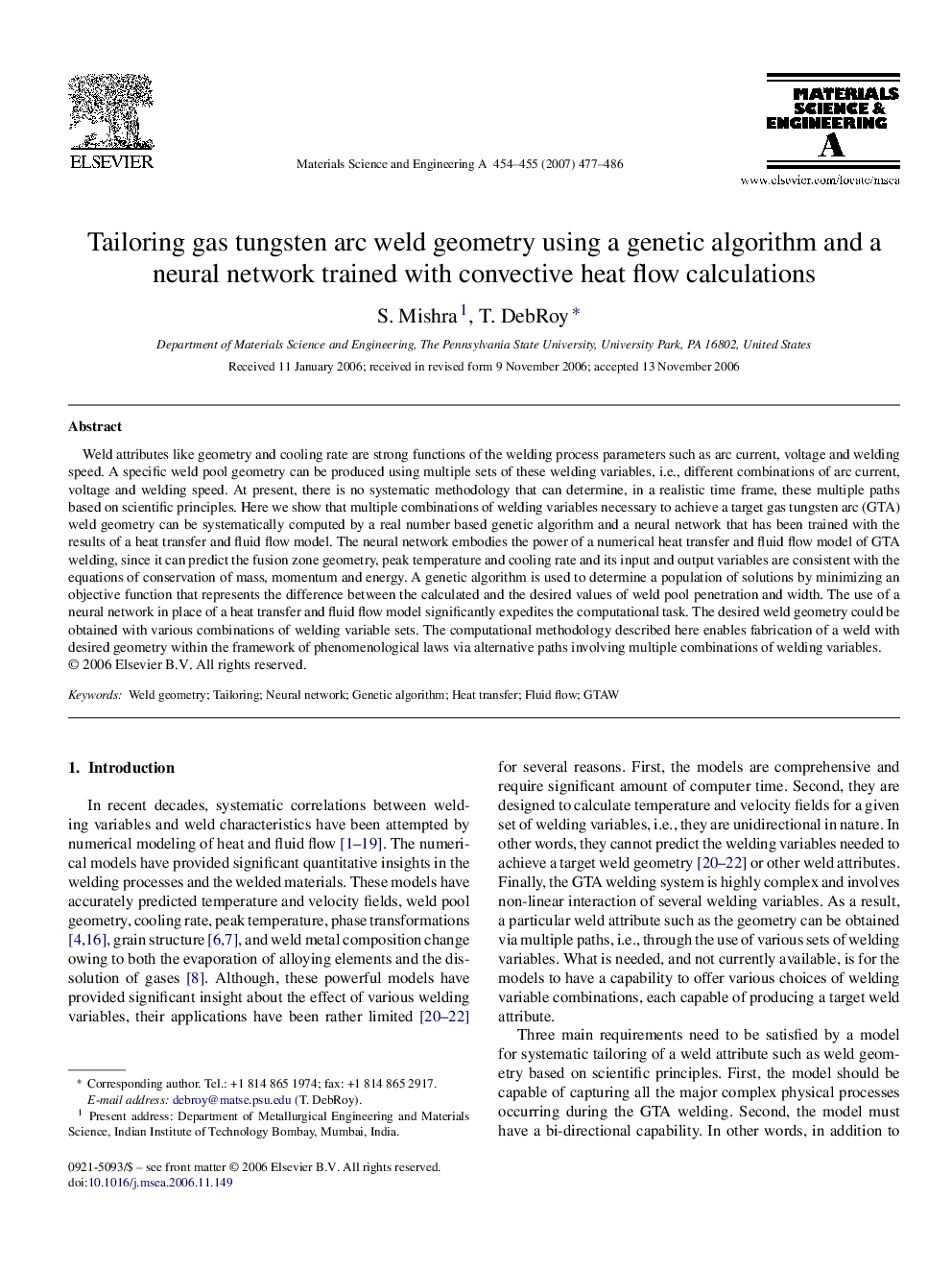| کد مقاله | کد نشریه | سال انتشار | مقاله انگلیسی | نسخه تمام متن |
|---|---|---|---|---|
| 1584293 | 1514898 | 2007 | 10 صفحه PDF | دانلود رایگان |

Weld attributes like geometry and cooling rate are strong functions of the welding process parameters such as arc current, voltage and welding speed. A specific weld pool geometry can be produced using multiple sets of these welding variables, i.e., different combinations of arc current, voltage and welding speed. At present, there is no systematic methodology that can determine, in a realistic time frame, these multiple paths based on scientific principles. Here we show that multiple combinations of welding variables necessary to achieve a target gas tungsten arc (GTA) weld geometry can be systematically computed by a real number based genetic algorithm and a neural network that has been trained with the results of a heat transfer and fluid flow model. The neural network embodies the power of a numerical heat transfer and fluid flow model of GTA welding, since it can predict the fusion zone geometry, peak temperature and cooling rate and its input and output variables are consistent with the equations of conservation of mass, momentum and energy. A genetic algorithm is used to determine a population of solutions by minimizing an objective function that represents the difference between the calculated and the desired values of weld pool penetration and width. The use of a neural network in place of a heat transfer and fluid flow model significantly expedites the computational task. The desired weld geometry could be obtained with various combinations of welding variable sets. The computational methodology described here enables fabrication of a weld with desired geometry within the framework of phenomenological laws via alternative paths involving multiple combinations of welding variables.
Journal: Materials Science and Engineering: A - Volumes 454–455, 25 April 2007, Pages 477–486